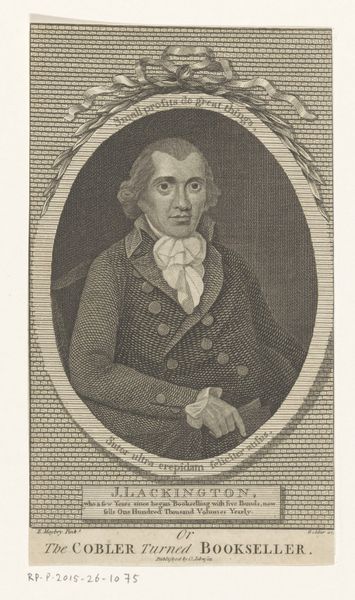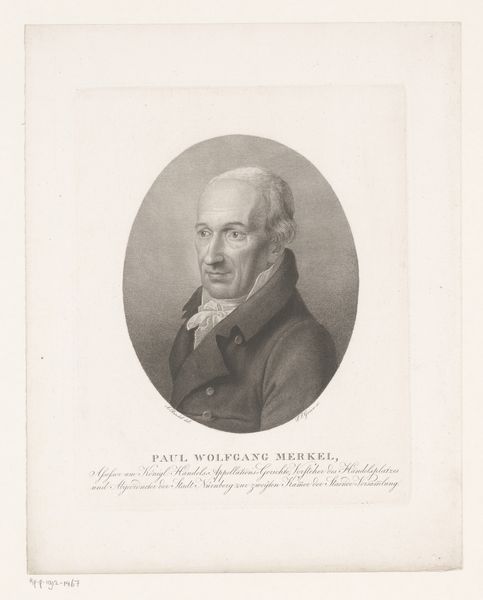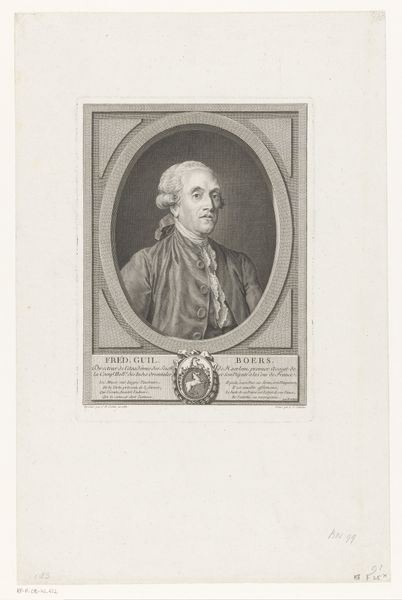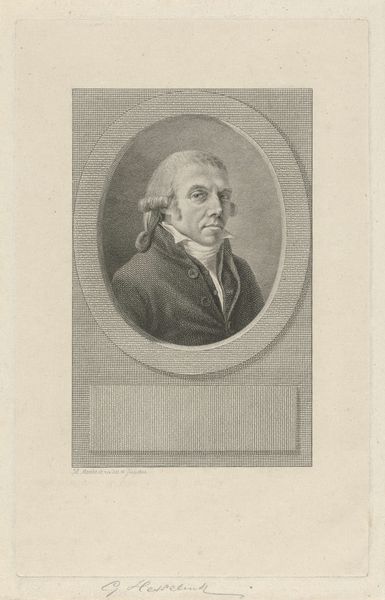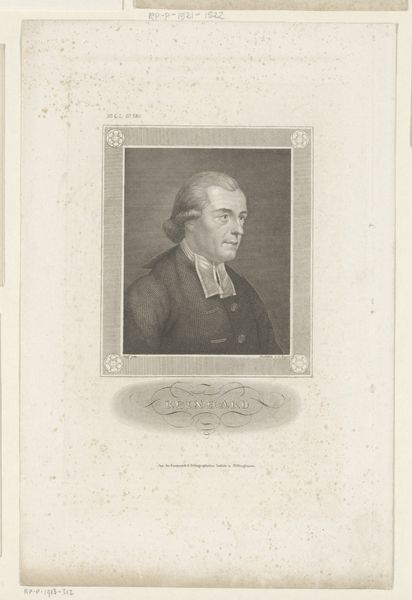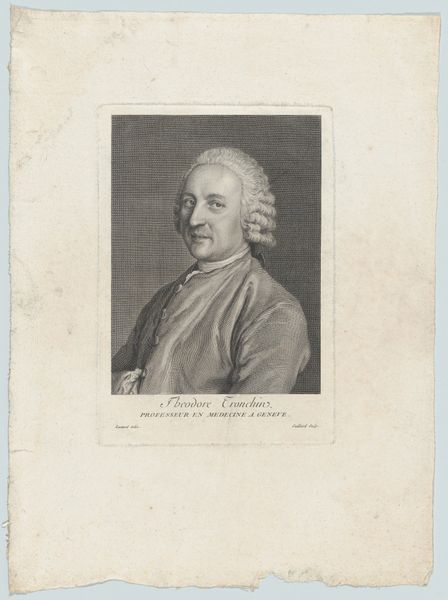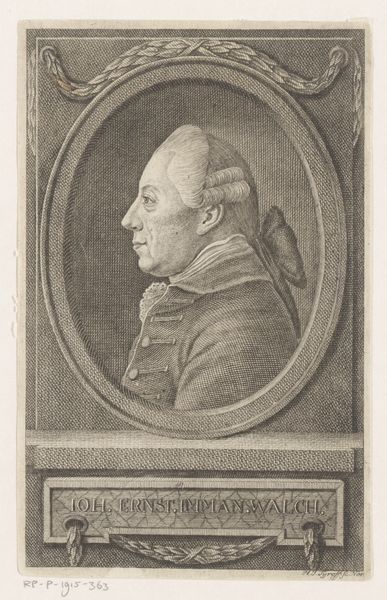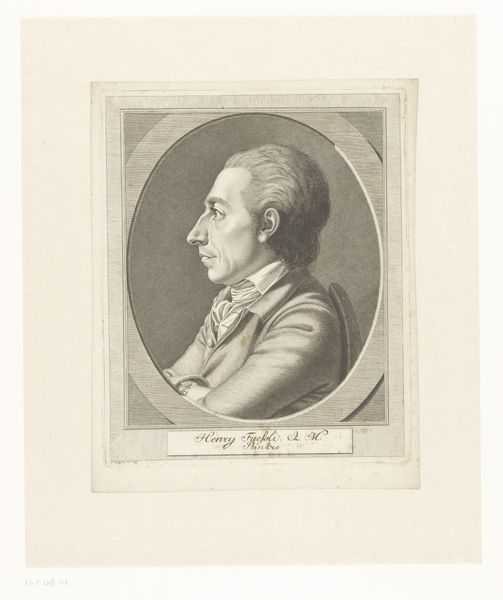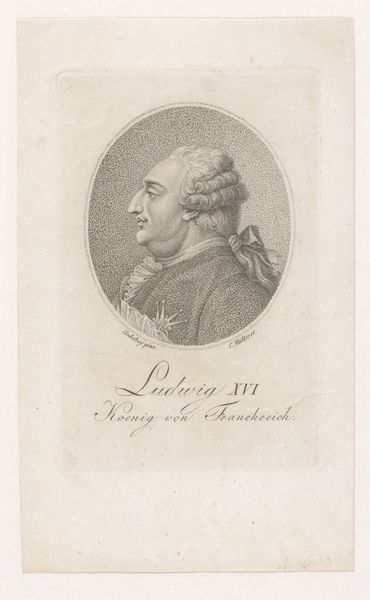
print, engraving
#
portrait
#
pencil drawn
#
neoclacissism
# print
#
old engraving style
#
charcoal drawing
#
pencil drawing
#
pencil work
#
engraving
Dimensions: height 212 mm, width 164 mm
Copyright: Rijks Museum: Open Domain
Curator: This print is titled “Portret van Theodor Christian Clermont,” placing its creation somewhere between 1782 and 1828. It’s attributed to Carl Ernst Christoph Hess. The work is an engraving. Editor: Wow, what strikes me immediately is how...severe it feels. The monochrome palette, that sharply defined face – he seems like a man who wouldn't crack a smile, or maybe someone trapped in a very rigid societal role. Curator: Absolutely, the period witnessed the flourishing of portraiture, particularly of those connected with power and influence, it visually articulated societal hierarchies, and gender norms prevalent during this era. His very posture communicates the rigidity of the epoch, and you’ll notice the Neoclassical artistic elements within its precise execution. Editor: You know, I see that – it's there in the almost idealized profile. But looking closer, there's also this incredible softness, especially around the eyes. It’s like the artist was trying to capture something beyond the official image, a hint of vulnerability maybe? I wonder what Clermont’s role in society actually was. Curator: We know from its title, and as rendered in script in the very body of the work, that he was "President von Clermont", likely suggesting someone occupying a governmental or influential civic position. Consider how attire, hairstyle, everything—it's communicating specific markers of status and social standing. It is saying, "I belong." Editor: Which also makes you wonder what pressures and restrictions he lived under. It's strange, how this formal portrait, meant to project power, also hints at the person beneath all the trappings, I feel like I want to go grab a coffee with this austere president. Curator: Indeed. His gaze, directed off to the side, could imply a future orientation, a vision toward progress— or perhaps discomfort or conflict with something in his immediate environment, though this would likely take more social research into this individual to properly contextualize. But this raises key questions about representation, identity, and agency, even when rendered by another hand. Editor: Art is so good at raising more questions, huh? Curator: Precisely. It reveals those complexities inherent to every moment. It provokes us to see history and ourselves anew. Editor: And sometimes, it just makes you want to talk to an old engraving over coffee.
Comments
No comments
Be the first to comment and join the conversation on the ultimate creative platform.


